Disclosure: This article contains affiliate links. We may earn a commission from purchases at no extra cost to you, which helps our travel content.
There's something about the Samoan concept of fa'a Samoa (the Samoan way) that resonates deeply with me. Perhaps it's how it mirrors the Japanese ichi-go ichi-e – the understanding that each moment is unique and should be treasured. As someone who's explored coastlines across five continents, I can tell you that Apia's hidden beaches embody this philosophy perfectly. They exist in a delicate balance between untouched paradise and accessible wonder, offering couples a chance to experience something increasingly rare in our over-traveled world: genuine discovery.
Fagalii Beach: The Urban Escape
Just 10 minutes east of Apia's bustling center lies Fagalii Beach, a stretch of shoreline that locals treasure but tourists rarely discover. What makes this beach remarkable isn't just its proximity to the city, but the striking contrast it offers. One moment you're navigating Apia's colorful markets, and the next, you're alone on a crescent of golden sand with views across to Upolu's verdant mountains.
During my first visit, I arrived just as an elder was finishing his morning swim. He smiled and gestured toward a cluster of pandanus trees. 'Best shade on the beach,' he said in perfect English. This casual interaction exemplifies what makes Samoan beaches special – they're not just places; they're extensions of community space.
The swimming here is excellent during high tide, with a natural rock wall creating a protected lagoon effect. Bring your own reef-friendly sunscreen as there are no facilities, and the Samoan sun is deceptively strong even on cloudy days.
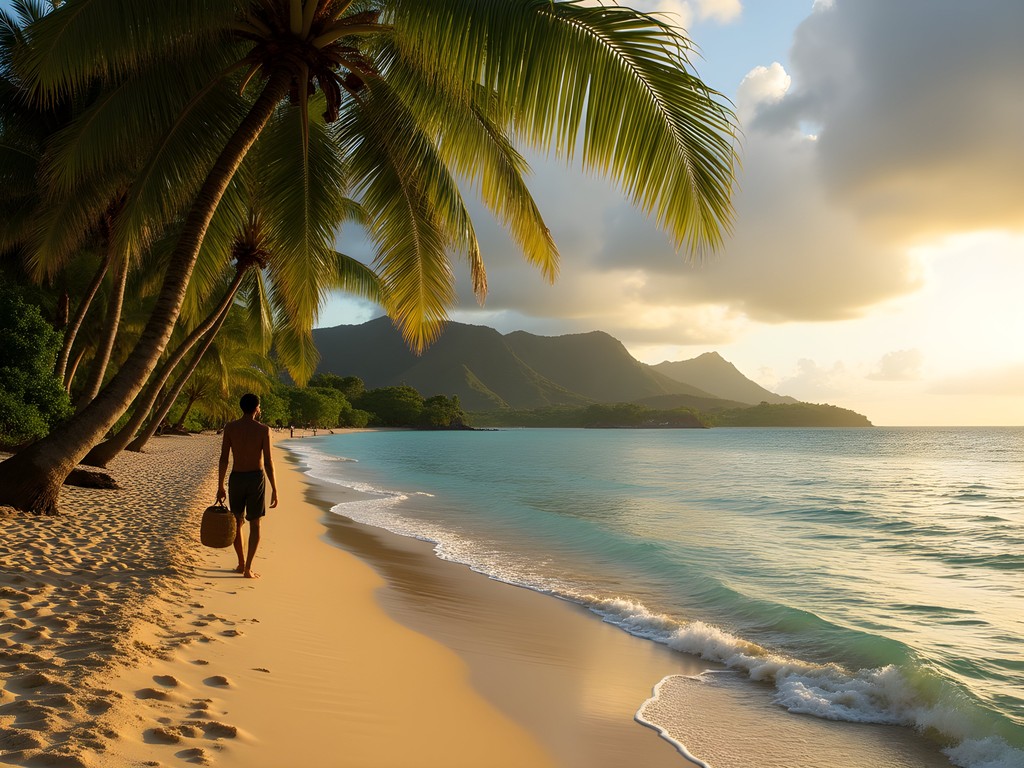
💡 Pro Tips
- Visit during weekday mornings for the most solitude
- Bring sufficient water as there are no vendors nearby
- Look for the path near the small church – it's the easiest access point
Palolo Deep Marine Reserve: The Snorkeler's Paradise
While technically not hidden (you'll find it in guidebooks), Palolo Deep remains surprisingly uncrowded and is absolutely worth including. Located within walking distance of downtown Apia, this marine reserve features a unique underwater topography – a deep blue hole surrounded by vibrant coral gardens.
What makes Palolo special is its accessibility combined with exceptional snorkeling. During high tide, swim about 100 meters offshore to reach the 'deep' – a natural coral crater dropping several meters below the surrounding reef. Here, the diversity of marine life rivals more famous snorkeling destinations I've visited across Southeast Asia.
My tip: arrive early with your own full-face snorkel mask. The small entrance fee (about 10 Tala) is collected by a local family who maintains the site, and they sometimes rent basic equipment, but quality varies. For underwater photography enthusiasts, I've found my waterproof phone case indispensable for capturing the kaleidoscope of fish without investing in expensive underwater camera gear.
The caretaker family often prepares simple lunches if arranged in advance – don't miss this authentic home-cooked opportunity.
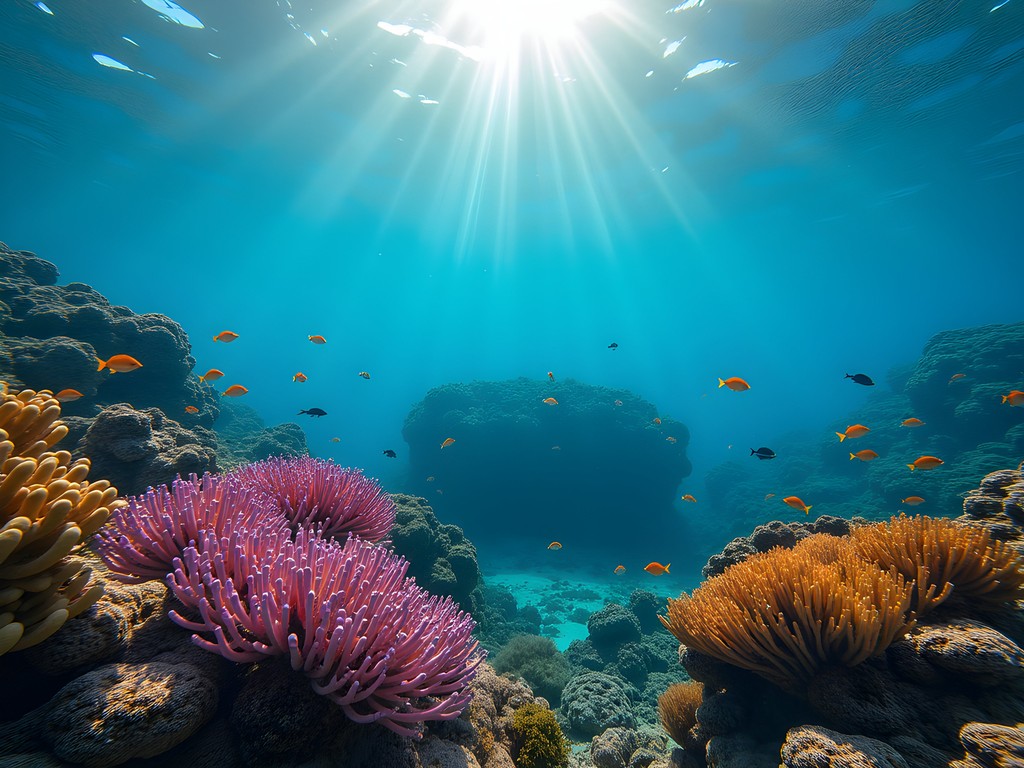
💡 Pro Tips
- Visit during high tide for the best swimming conditions
- Bring reef shoes for the rocky entry point
- Take time to chat with the caretaker family – they know the best spots to see specific marine life
Aganoa Black Sand Beach: The Volcanic Wonder
When I first stumbled upon Aganoa Beach after a 45-minute drive east of Apia, the contrast between its jet-black sand and the azure Pacific literally stopped me in my tracks. This dramatic shoreline, created by ancient volcanic activity, remains one of Samoa's most photogenic yet least visited beaches.
The drive itself is part of the experience, winding through villages and past roadside fruit stands where stopping for fresh coconut (niu) is practically mandatory. The beach access requires a short walk through property belonging to a local family – the customary small fee (about 5 Tala per person) supports their stewardship of this natural treasure.
What makes Aganoa special is the interplay of elements: black sand that heats quickly under the tropical sun, creating a fascinating temperature gradient as you walk from shore to water. The beach faces north, making it ideal for sunrise photography. During my last visit, I captured the morning light with my phone mounted on a flexible travel tripod – essential for those long-exposure shots of waves washing over volcanic sand.
Be mindful that this beach has stronger currents than protected lagoons – perfect for experienced swimmers who enjoy more dynamic waters, but families should exercise caution.
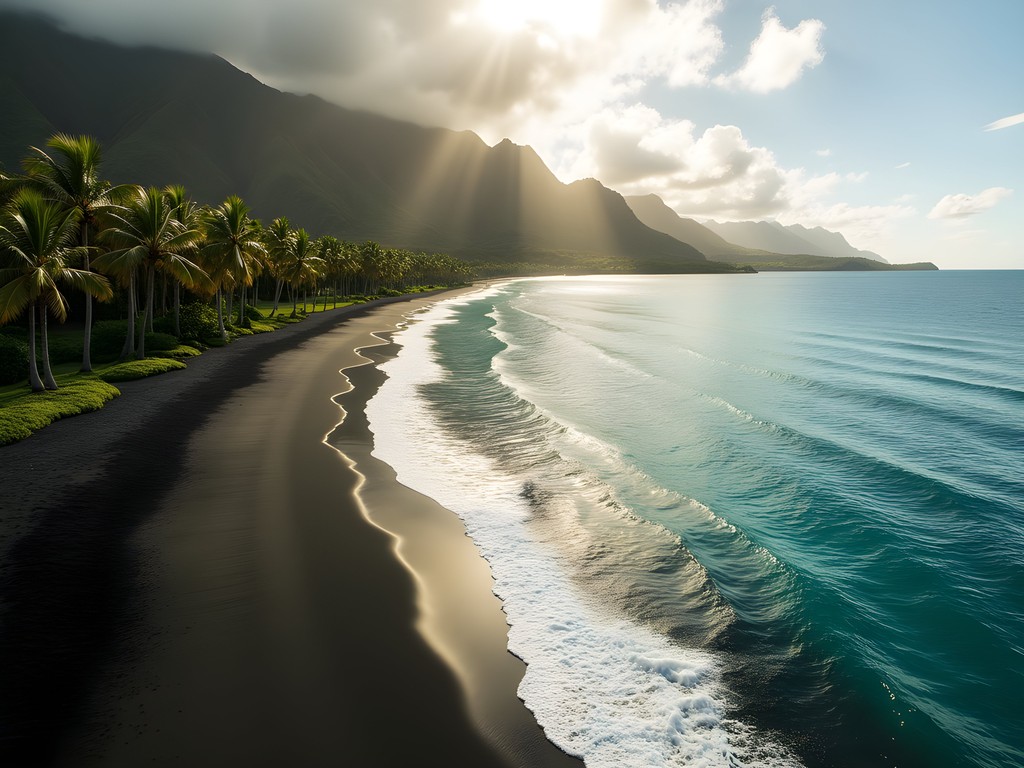
💡 Pro Tips
- Wear water shoes as the black sand becomes extremely hot midday
- Bring small bills for the entrance fee
- Plan your visit for early morning when the light creates stunning contrasts
Taumeasina Secret Cove: The Honeymooner's Retreat
While Taumeasina Island Resort dominates the tourist scene just offshore from Apia, few visitors discover the hidden cove tucked behind the eastern edge of the island. This small pocket beach, accessible via a narrow path from the main road, offers a perfect balance of convenience and seclusion.
What makes this spot special is its natural rock pools that form during low tide – nature's own infinity pools overlooking the Pacific. The first time I discovered this spot, I spent hours watching the interplay of light on water as the tide gradually transformed the landscape.
For couples seeking romance, this beach delivers spectacular sunsets. Pack a compact beach blanket and arrive about an hour before dusk. The western orientation means you'll witness the sun melting into the horizon behind Apia's silhouette – a view that rivals more famous sunset spots I've experienced in Bali and Thailand.
To elevate the experience, stop by Apia's market beforehand for fresh tropical fruits and perhaps a bottle of wine. There's something magical about sipping from insulated wine tumblers while watching the sky transform through impossible shades of orange and pink. Just remember to take all trash with you – practicing malaga fa'aaloalo (respectful travel) is essential in preserving these hidden gems.
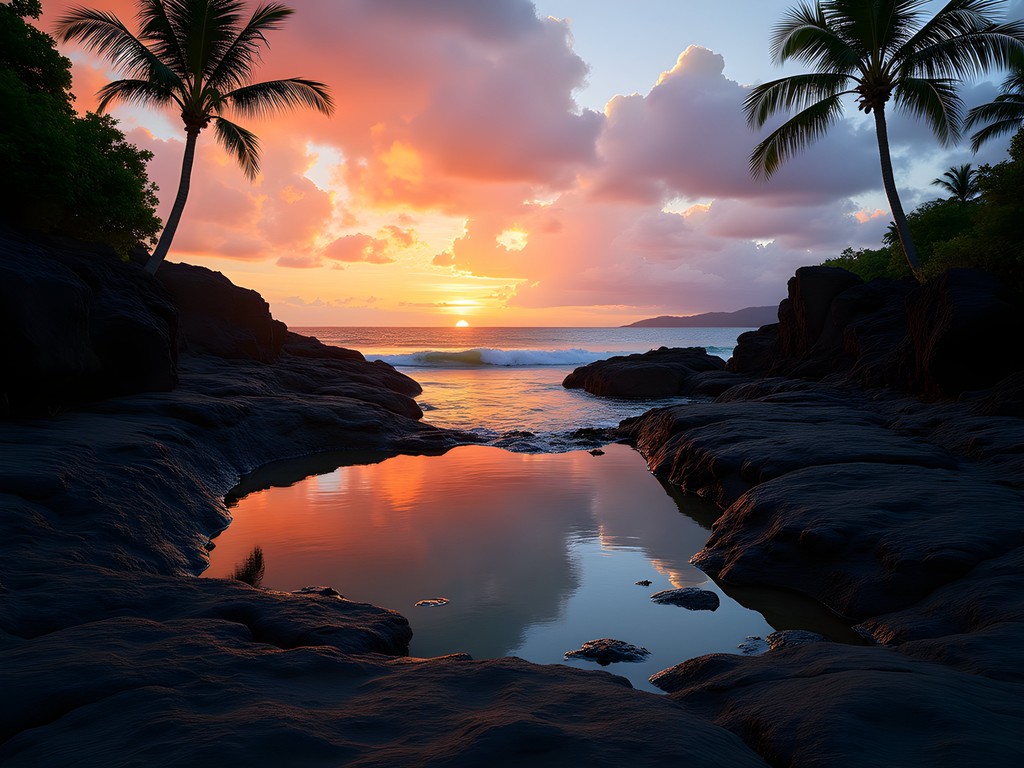
💡 Pro Tips
- Check tide tables – low tide reveals the most interesting rock formations
- Bring reef shoes for comfortable exploration of the pools
- Pack out all trash as there are no facilities here
Falealupo Peninsula: The Time Capsule
While technically a day trip from Apia (about 1.5 hours drive), no list of hidden beaches would be complete without mentioning Falealupo. This remote peninsula represents old Samoa, largely unchanged by modern tourism, with beaches that remind me of what Thailand's islands must have looked like 40 years ago.
The journey itself is part of the experience, winding through villages where life moves to the rhythm of fa'a Samoa. I recommend renting a compact cooler to bring lunch and plenty of water, as amenities are scarce.
What makes Falealupo extraordinary is the sense of stepping back in time. Traditional fale (open-sided Samoan houses) dot the coastline, and you'll likely share the beach only with local children playing in the shallows. The swimming is excellent, with a gentle gradient and protective reef creating calm conditions.
During my last visit, I spent hours conversing with an elder who explained the peninsula's spiritual significance in Samoan cosmology – according to tradition, this is where souls begin their journey to the afterlife. This cultural dimension adds profound depth to the physical beauty.
For couples seeking true escape, consider arranging an overnight stay in a beach fale through the village council. Falling asleep to ocean sounds in a traditional structure, with no electricity beyond solar lamps, creates the kind of authentic experience increasingly rare in our hyper-connected world.
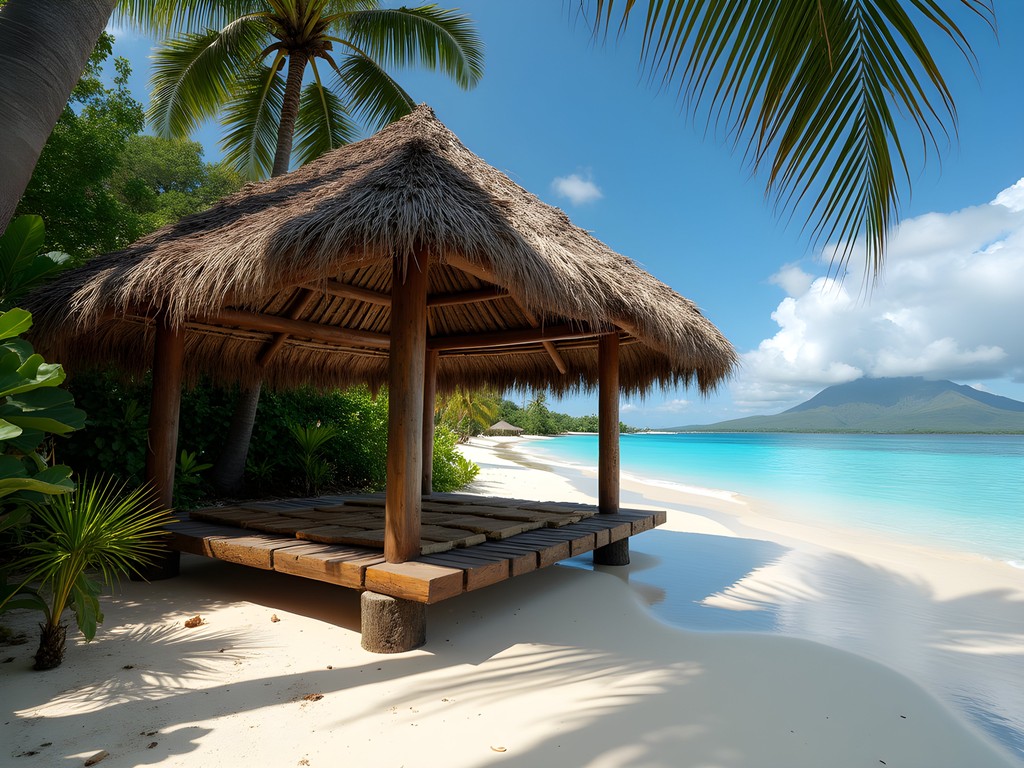
💡 Pro Tips
- Respect village customs – cover shoulders and knees when walking through communities
- Ask permission before photographing people or traditional structures
- Bring mosquito repellent for late afternoon and evening
Salamumu Bay: The Local's Secret
About 40 minutes southwest of Apia lies Salamumu Bay, a stretch of coastline where Samoan families gather on weekends but tourists rarely venture. What makes this beach special is its authentic glimpse into everyday Samoan life – from Sunday picnics after church to traditional fishing practices at dawn.
The beach itself features a mix of white sand and volcanic rock, creating natural swimming pools at low tide that are perfect for cooling off. The surrounding jungle grows almost to the water's edge, providing natural shade throughout the day – a blessing in Samoa's tropical heat.
During weekdays, you might have long stretches entirely to yourself. My favorite spot is the eastern end, where a small freshwater stream creates a natural shower to rinse off after swimming. Bring a packable hammock to string between palm trees – I've spent entire afternoons swaying in the breeze, alternating between reading and swimming.
For those interested in Samoan culinary traditions, Salamumu offers a unique opportunity. On Saturdays, locals sometimes prepare traditional umu (earth oven) meals on the beach. If you're fortunate enough to be invited to share (or can arrange this through a local guide), you'll experience flavors impossible to find in restaurants – taro and breadfruit cooked with hot stones, fresh fish wrapped in banana leaves, and perhaps palusami (young taro leaves baked with coconut cream).
Bring your dry bag to protect valuables, as afternoon rain showers are common year-round.
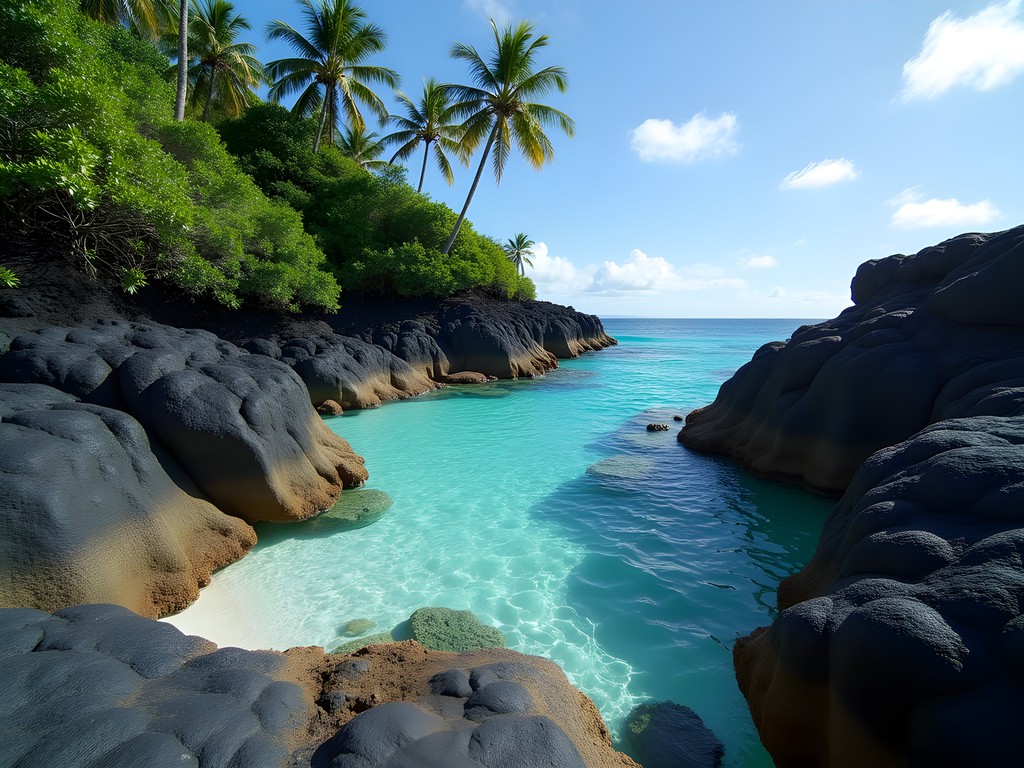
💡 Pro Tips
- Visit on weekdays for solitude or weekends to observe local traditions
- Bring your own food and water as there are no vendors
- Ask permission if photographing local families enjoying the beach
Return to Paradise Beach: Worth the Journey
Named after the 1953 film shot on location, Return to Paradise Beach lies about an hour's drive southwest of Apia near Lefaga Village. Despite its cinematic history, it remains remarkably uncrowded compared to beaches of similar beauty elsewhere in the Pacific.
What distinguishes this beach is its dramatic combination of elements – wide white sand shores, dramatic rock formations, and powerful surf that creates a hypnotic soundtrack. Unlike the protected lagoon beaches common in Samoa, here the open ocean crashes directly onshore, creating a more dynamic experience.
My recommendation: arrive prepared for a full day with a beach shade tent, as natural shade is limited during midday. The beach is expansive enough that you can always find a private spot, even when locals gather for weekend swimming.
For those interested in Samoa's cinematic history, bring a copy of the film's story or images to compare the landscape then and now – remarkably little has changed in nearly 70 years, a testament to Samoa's preservation of its natural treasures.
Swimming conditions vary dramatically with the seasons and tides. During calm periods, the swimming is excellent, but when the surf is up, powerful currents make it suitable only for experienced ocean swimmers. Always observe local behavior – Samoans have a deep understanding of their waters.
The small entrance fee (typically 5-10 Tala per person) goes directly to the village that maintains the beach. This sustainable tourism model ensures local communities benefit from preserving rather than developing their coastal treasures.
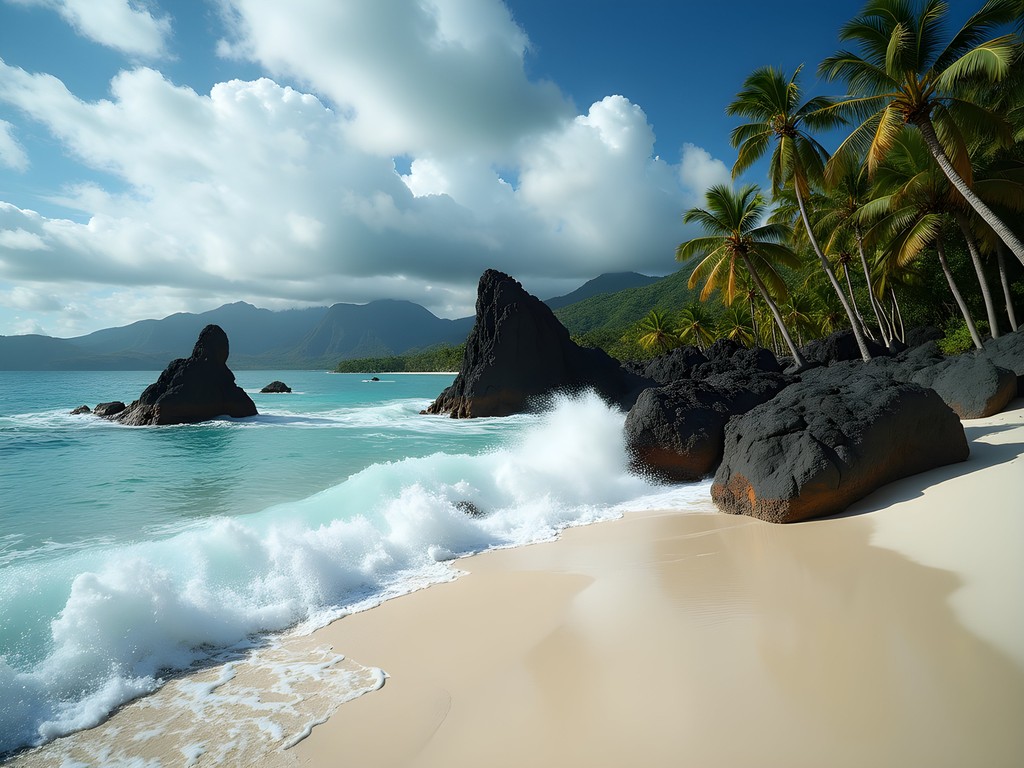
💡 Pro Tips
- Check weather conditions before visiting – this beach is best on calmer days
- Bring small bills for the entrance fee
- Pack plenty of drinking water and snacks as there are limited facilities
Final Thoughts
As I sit writing these final thoughts, watching the sun sink into the Pacific from my temporary beach fale, I'm reminded of what makes Samoa's hidden shores so special. Unlike the manicured beaches of resort destinations, these places remain authentic – living landscapes where natural beauty and cultural heritage exist in harmony.
For couples seeking connection – both with each other and with a place – Samoa's hidden beaches offer something increasingly precious: space to breathe, discover, and simply be present together. The Japanese concept of yūgen comes to mind – the profound awareness of the universe that triggers emotional responses too deep for words.
I encourage you to approach these beaches with respect for both the natural environment and the communities who have been their stewards for generations. Practice malaga fa'aaloalo (respectful travel) by learning a few Samoan phrases, asking permission before photographing people, and always packing out what you bring in.
Samoa isn't just a destination; it's an invitation to experience a different relationship with the coastal world – one where beaches aren't commodities but living extensions of culture and community. In our rapidly changing world, such places deserve not just our visit, but our protection.
✨ Key Takeaways
- The best hidden beaches require respect for local customs and small access fees that support community conservation
- Visit beaches near Apia on weekdays for maximum solitude or weekends to glimpse authentic Samoan family traditions
- Pack essential supplies as most hidden beaches have minimal facilities
📋 Practical Information
Best Time to Visit
May-October (dry season) for most reliable weather, though beaches are accessible year-round
Budget Estimate
$100-150 USD daily for mid-range accommodations, car rental, and meals
Recommended Duration
7-10 days to explore Apia and surrounding beaches at a relaxed pace
Difficulty Level
Easy To Moderate (Some Beaches Require Short Hikes Or Rough Roads)
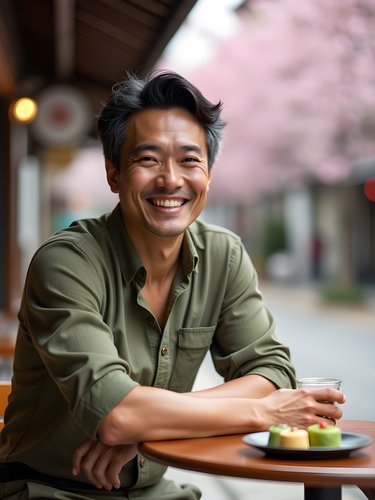
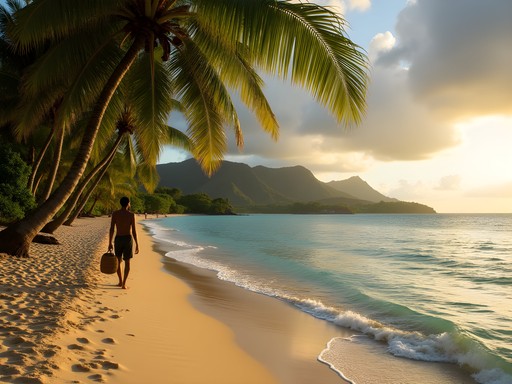

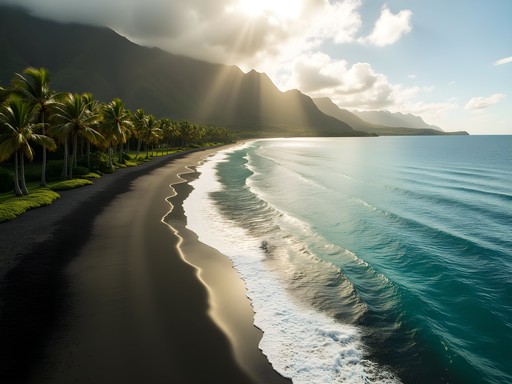
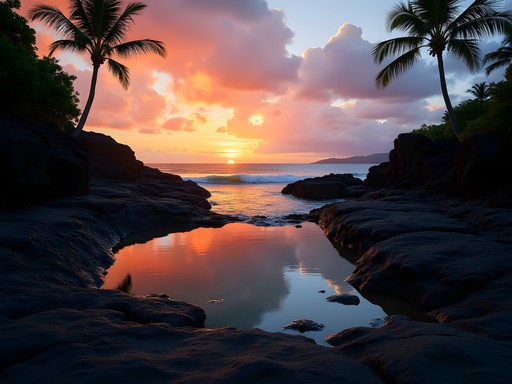

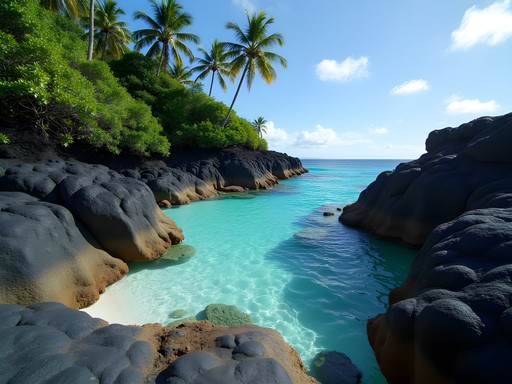


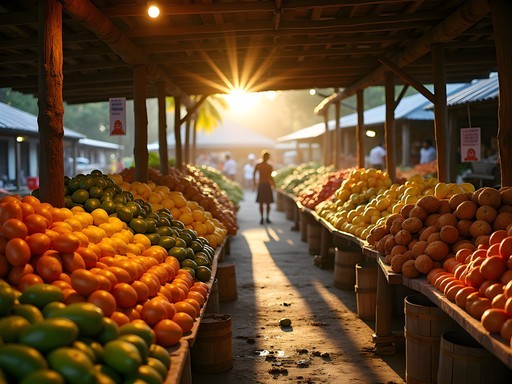
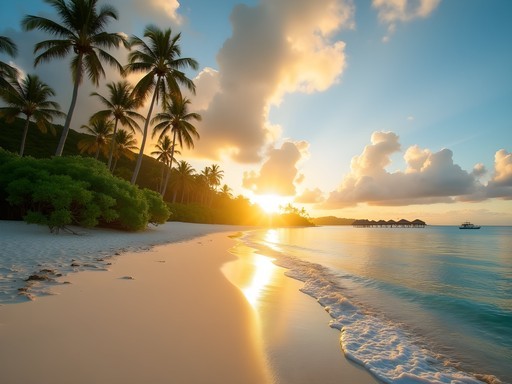
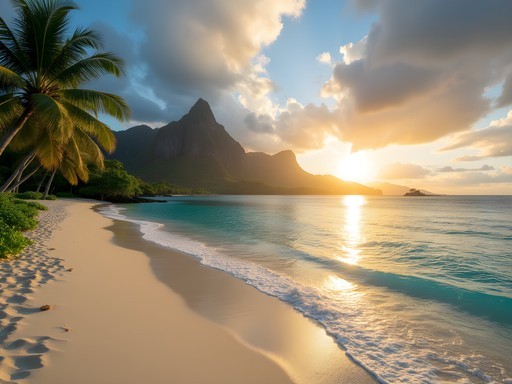
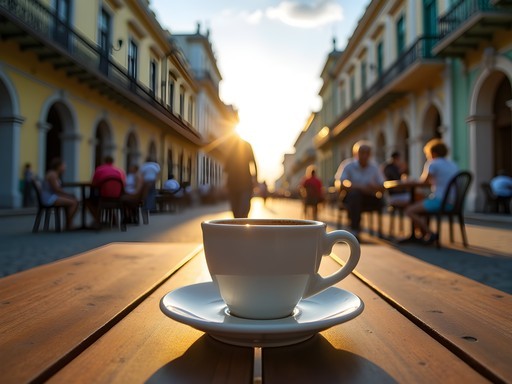
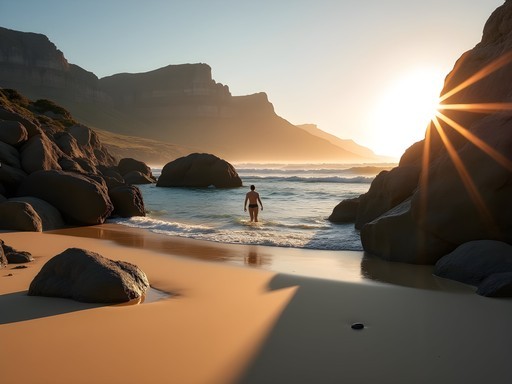
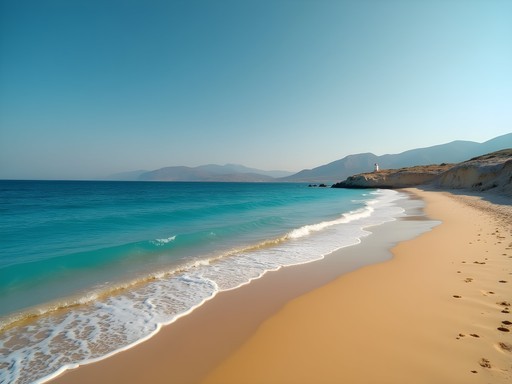
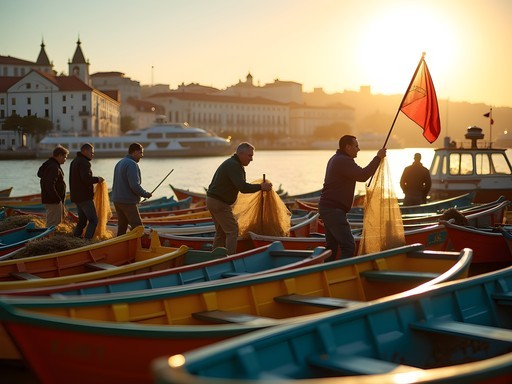
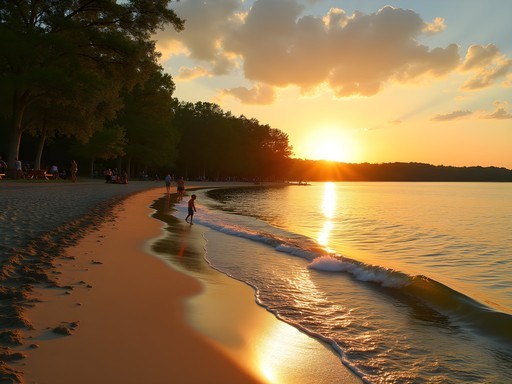
Comments
Sage Dixon
Hunter, your description of Taumeasina Secret Cove brought back wonderful memories! I discovered it by accident when a local fisherman pointed me away from the main resort beach. The way the cove is nestled between those volcanic rocks creates the most perfect natural swimming pool. For anyone heading there, I recommend bringing water shoes as the entry point can be a bit rocky. The best time to visit is actually during mid-tide - low tide exposes too much coral and high tide covers the small sandy patch completely. Also, the family who owns the small roadside fruit stand nearby makes amazing fresh coconut ice cream. Don't miss it!
dreambackpacker
Thanks for the tip about the coconut ice cream! Definitely trying that when I go in November.
redpro
OMG!!! Just booked my flights to Samoa after reading this! Can't wait to check out these beaches! Has anyone been to Palolo Deep for sunset? Are there any safety concerns being there later in the day?
Gregory Boyd
Great write-up Hunter! Having explored most of Samoa's coastline over three separate trips, I'd add that Fagalii Beach has changed quite a bit since the old airport closed. The area is much quieter now and the locals have really embraced keeping it clean. If you're heading to Aganoa, consider bringing your own snorkeling equipment - the volcanic minerals in the water create amazing visibility but rentals can be limited. I used my full-face snorkel mask which was perfect for spotting the sea turtles that frequent the northern end of the beach. Also worth noting that during November-March, afternoon rain showers are common but they pass quickly.
greenmaster
Planning a trip there in October. Is it easy to get to Taumeasina Secret Cove without a car? Public transportation options?
hikinglegend
We used the local buses to get around most places. Super cheap but no real schedule - they just come when they come! For Taumeasina you might need to walk a bit from the main road.
dreambackpacker
Has anyone stayed at those beach fales Hunter mentioned? Are they comfortable enough for a week-long stay or better for just a night or two?
Sage Dixon
I stayed in the fales at Aganoa for 4 nights last year and loved it! Simple but comfortable. The shared bathrooms are kept very clean. Bring a lightweight sleep sheet though - sometimes it's too hot for the blankets they provide. And don't forget good insect repellent for the evenings!
globefan1112
Those beaches look amazing! Adding to my bucket list!
hikinglegend
Just got back from Samoa last month and Palolo Deep Marine Reserve was the highlight of our trip! The coral formations are incredible and we saw so many colorful fish. Pro tip: go early in the morning before the tour groups arrive. We had the place almost to ourselves until about 10am. The local family that manages the entrance is super friendly too. They let us borrow some extra snorkel gear when my mask broke.
Gregory Boyd
How was the current when you visited? I've heard it can get pretty strong during certain times of the year.
hikinglegend
It was actually pretty calm when we went (early August). The locals mentioned it gets rougher in December-January though.
beachtime4647
Which beach had the best snorkeling? Heading there in October!
winterguide
Not the author but I was there in 2024 - Palolo Deep hands down. Bring your own gear though!
beachtime4647
Thanks for the tip! Will do.
backpackblogger
What's the best time of year to visit these beaches? Trying to avoid rainy season but still get good deals on flights.
luckygal
May-October is perfect! We went in June and had amazing weather but fewer tourists than July-August peak season. Prices were better too.
winterguide
How did you get around to these beaches? Rental car or is public transport an option?
blueway
I'm curious about this too! Hoping to avoid renting a car if possible.
Hunter Reynolds
Great question! I used a mix of both. The colorful local buses are perfect for reaching Fagalii Beach and Palolo Deep. For the more remote spots like Aganoa, I rented a scooter for about $25/day. Taxis are also affordable if you're traveling with family.
Venture X
Premium card with 2X miles, $300 travel credit, Priority Pass